How To Plant And Grow An Olive Tree, In Collaboration With Paul And Antonia Smith

TREES > OLIVE
Reviewed By DAN ORI

Dan has over 27 years’ under his belt caring for plants and gardens. Working as a Horticultural Instructor and Consultant, he draws on a diverse range of experience that includes working as a Head Gardener, Tree Surgeon, Garden Centre Trouble Shooter, and writer of academic papers. Dan has a Level 3 Diploma in Horticulture and is currently a candidate for the RHS’s most prestigious award – The Master of Horticulture.
Contributions From PAUL & ANTONIA SMITH

With 30 years’ experience as an Arborist, Paul has a particular soft spot for olive trees, which he has been growing in the UK for over 10 years. The duo import their trees from licenced suppliers in Spain and select them by hand for their shape and form.
IN THIS GUIDE
OLIVE GUIDES
Olive trees can instantly add a Mediterranean feel to any garden aesthetic.
Despite their roots in warmer climes, they tolerate the British weather remarkably well – provided they’re given pride of place in terms of sun and shelter.
In this guide, we’ve collaborated with The Norfolk Olive Tree Company, which is run by Paul and Antonia Smith.
“The Olive Tree provides yearlong colour and interest and produce flowers in spring that are beneficial to wildlife – the bees love them,” says Paul.
“It is a small, slow-growing tree so it is ideal for small gardens and border displays”.
Although they’re less likely to produce a plentiful harvest in the UK, it is possible to coax a small yield from these slender and stylish trees – just don’t expect to be pressing your own olive oil any time soon.
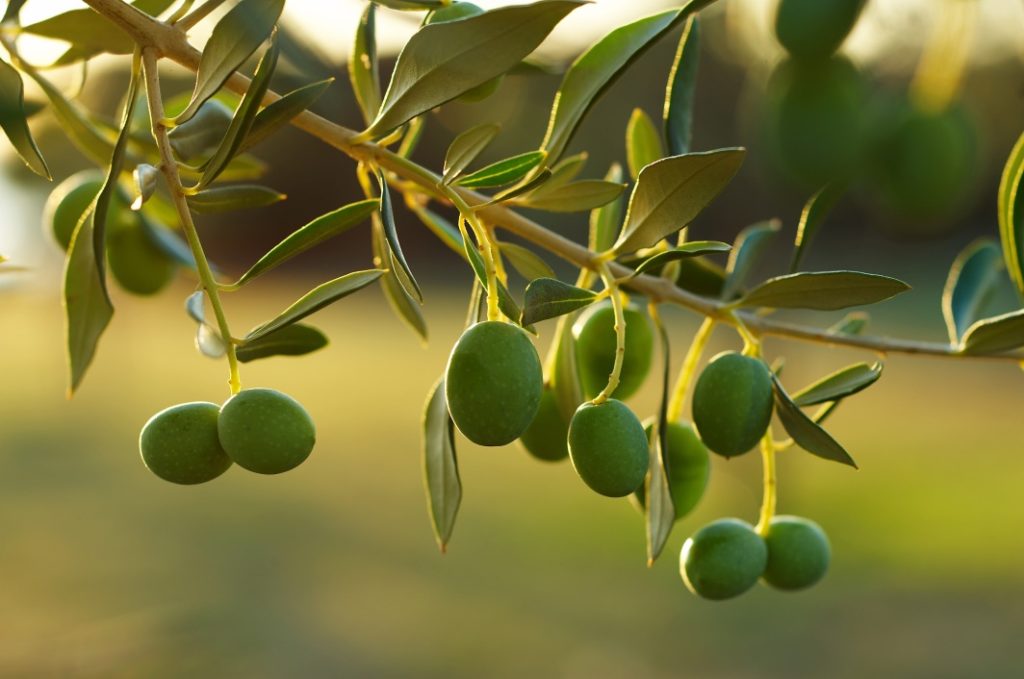
In any case, even if you don’t manage to get your olive tree to actually produce olives, it’ll still be an elegant addition to any garden display.
With silvery, leather-like foliage and compact, upright architecture, smaller varieties are ideal for locations where space is at a premium.
Overview
| Botanical Name | Olea europaea |
| Common Name(s) | Olive Tree |
| Plant Type | Evergreen Tree |
| Native Area | Mediterranean |
| Hardiness Rating | H4 |
| Foliage | Bushy evergreen foliage with leathery leaves growing on opposite sides of the branch |
| Flowers | Small white panicles |
| When To Plant | March, April, May, June, July, August, September |
| Flowering Months | May, June, July, August |
| When To Prune | April, May |
Sunlight
Preferred
Full Sun
Exposure
Sheltered
Size
Height
5 – 10M
Spread
1 – 2.5M
Bloom Time
Summer
Soil
Preferred
Chalk, clay, loam or sand
Moisture
Well drained
pH
Any
Did you know that olive trees are capable of surviving for millennia?
In fact, the oldest known specimens of this Mediterranean stalwart are believed to be between 2,000 and 3,000 years old.1Raezer, D. (2022, October 11). World’s Oldest Olive Tree. Approach Guides. Retrieved March 21, 2023, from https://approachguides.com/blog/oldest-monumental-olive-tree-vouves-crete/
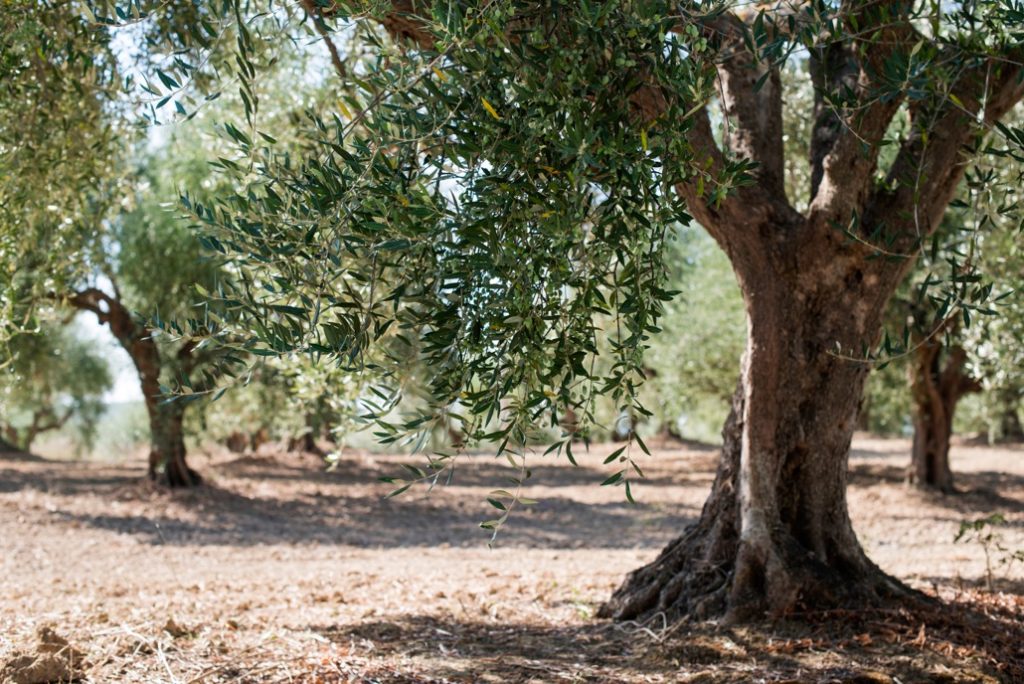
It’s little surprise, then, that they were favoured by the empires of both Ancient Greece and Ancient Rome.2Cartwright, M. (2016, September 9). The Olive in the Ancient Mediterranean. World History Encyclopedia. Retrieved March 21, 2023, from https://www.worldhistory.org/article/947/the-olive-in-the-ancient-mediterranean/
It’s for that reason that they’re virtually synonymous with the sultry climes and laid-back lifestyle of a holiday overseas, and planting one in your garden can replicate that inviting atmosphere.
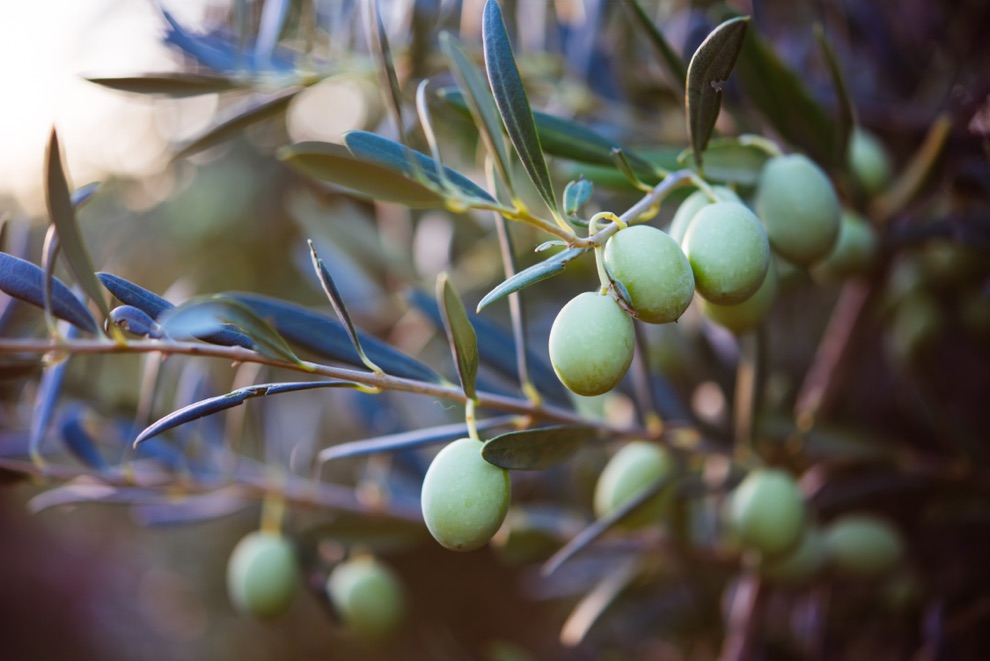
Though they are demanding in terms of the sunlight and shelter they receive and the drainage of their soil, they’re largely resilient plants which don’t require too much in the way of TLC otherwise.
That, and their aptitude for container cultivation, make them an increasingly common sight in sunny spots around the UK.
Olive Varieties
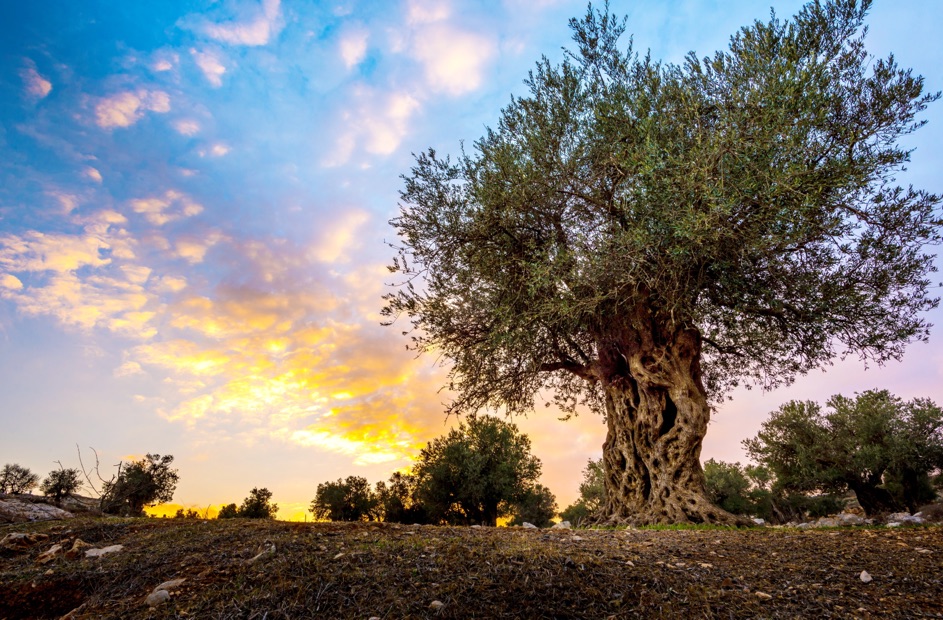
There aren’t massive discrepancies in the growing habits and maintenance requirements of different olive tree cultivars, but there are certain varieties which can fruit more reliably or tolerate cold more effectively than others.3Olea europaea (F) | common olive. (n.d.). Royal Horticultural Society. Retrieved March 21, 2023, from https://www.rhs.org.uk/plants/11735/olea-europaea-(f)/details
As such, it’s a good idea to tailor your selection to your particular regional climate and the purposes for which you want the tree in the first place.
“If you’re planning to grow fruit, we recommend the Arbequina” explains Paul Smith.
“Otherwise, we favour the Leccino Olive Tree, which can grow up to 30 feet.
“However, they are not self-fertile and will need a pollinator to grow fruit”.
Paul and Antonia also express a fondness for the Picual Olive Tree, as they are good for overwintering in the UK and are particularly resistant to pests and diseases.
Here’s a little more info on the more common varieties found in the UK:
Olea europaea ‘Arbequina’
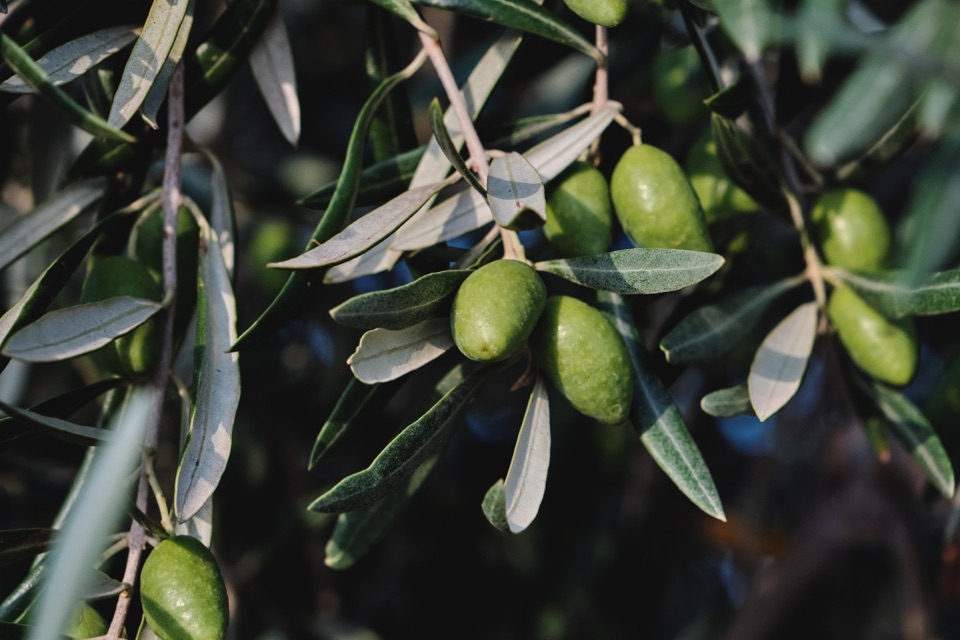
This Catalan variety hails from the east of Spain and is particularly suited to areas prone to frost or poor soil quality.
It’s on the smaller side, growing up to 6m, but can be quite vigorous in its development.
O. europaea ‘Frantoio’
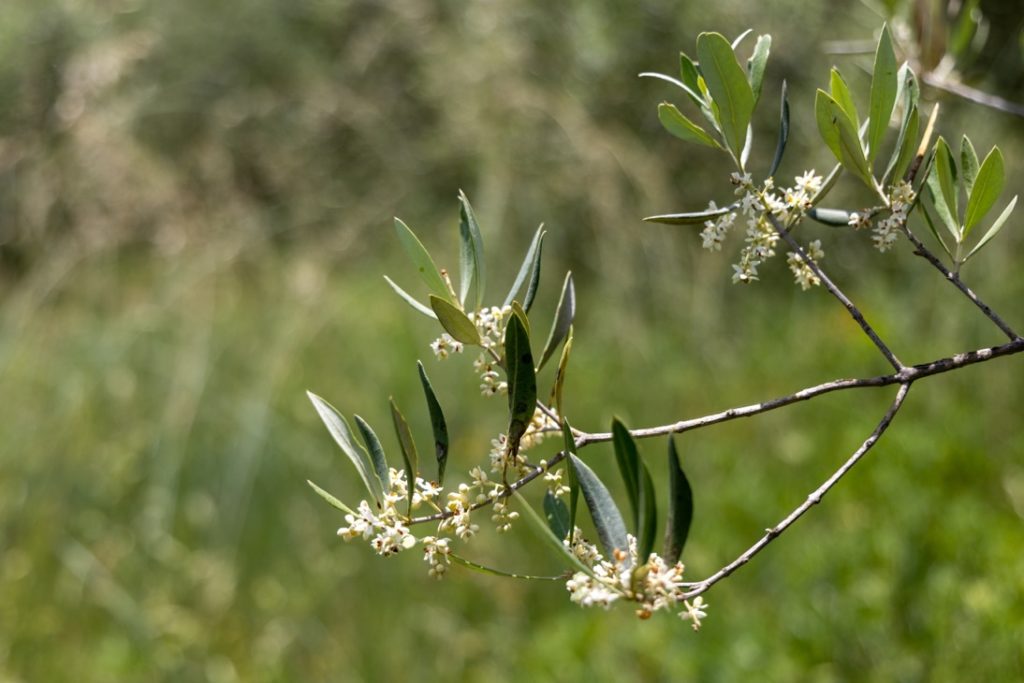
This classic specimen is native of Tuscany in central Italy and is perhaps the number one choice for those looking to reap a decent fruit harvest from their tree.
It’s very easy to cultivate in the UK, too.
O. europaea ‘Pendolino’
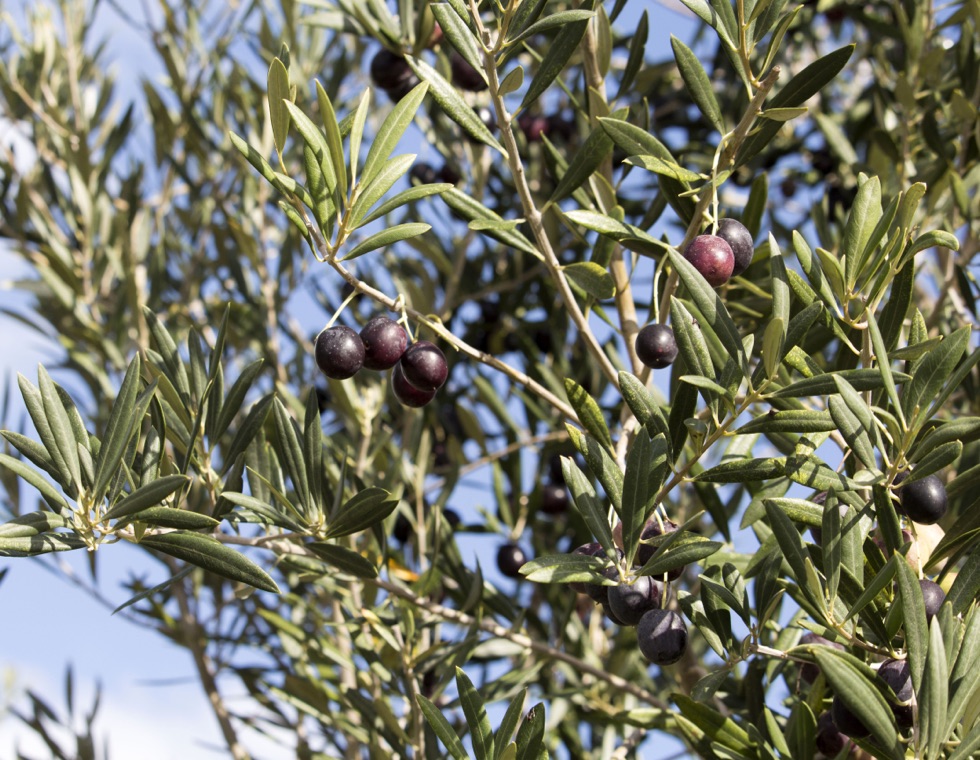
With compact dimensions and a weeping structure, this Tuscan alternative is excellent for smaller spaces.
However, it will need to be planted alongside other olive varieties in order to have any chance of producing fruit.
Planting Olive Trees
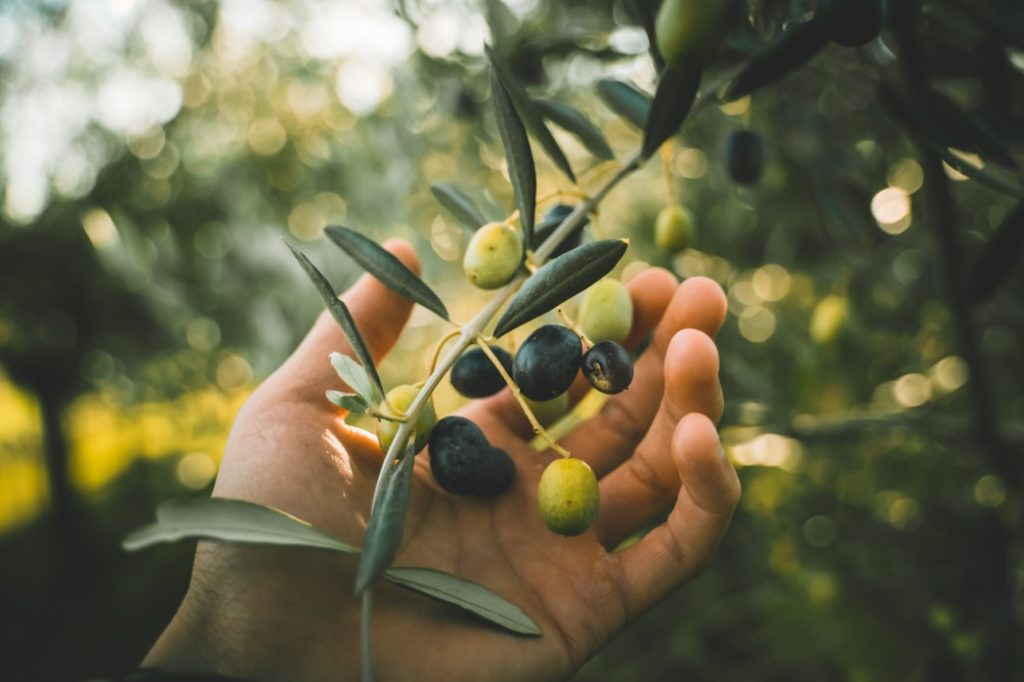
When planting an olive tree in the ground, dig a hole twice the width of the root ball and enhance the quality of the soil with mycorrhizal fungi or another organic aid, which will facilitate rapid root establishment.
Spread the roots out when planting and tamp down the soil.
Drainage is key, regardless of how you plant your olive tree, as Paul explains:
“Olive trees are not fussy about soil type, but it must be free draining.
“So, if you have clay soil break it up with grit and sand and test it before planting, making sure that water will drain”.
It’s also advisable to stake plants for the first several seasons to allow their roots and trunk to develop.
Where To Plant
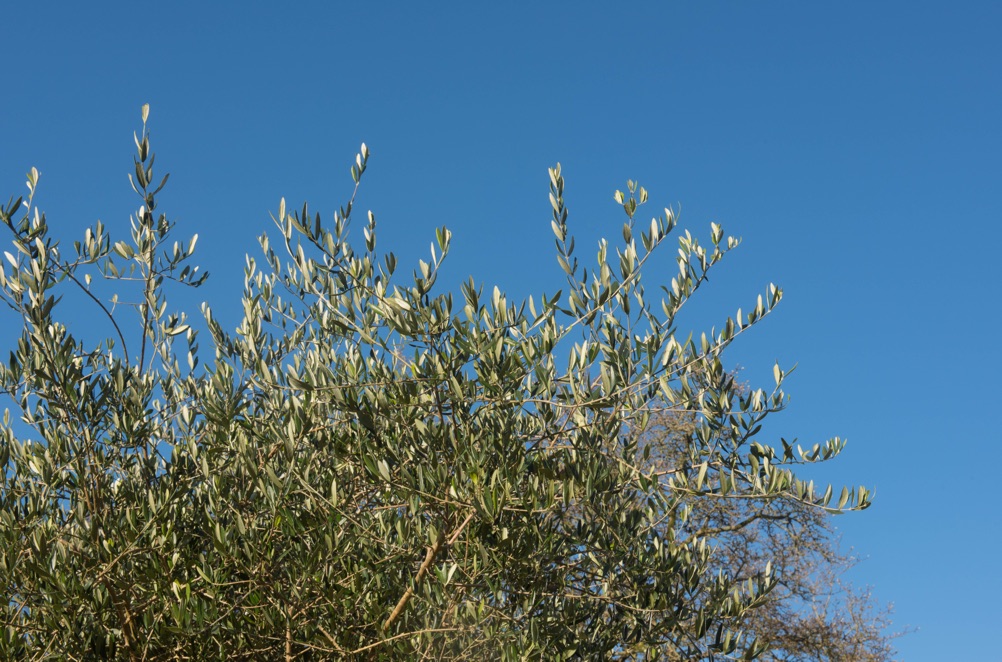
Olive trees love sunlight, so choose the sunniest and most sheltered spot in your garden.4Koubouris, G., Kavroulakis, N., Metzidakis, I., & Sofo, A. (2015, March). Ultraviolet-B radiation or heat cause changes in photosynthesis, antioxidant enzyme activities and pollen. . . ResearchGate. Retrieved March 21, 2023, from https://www.researchgate.net/publication/273696243_Ultraviolet-B_radiation_or_heat_cause_changes_in_photosynthesis_antioxidant_enzyme_activities_and_pollen_performance_in_olive_tree
“I recommend growing an olive in a pot against a sheltered sunny brick wall for the best chance of ripened olives,” says Master Horticulturist Dan Ori.
Olive Tree Care
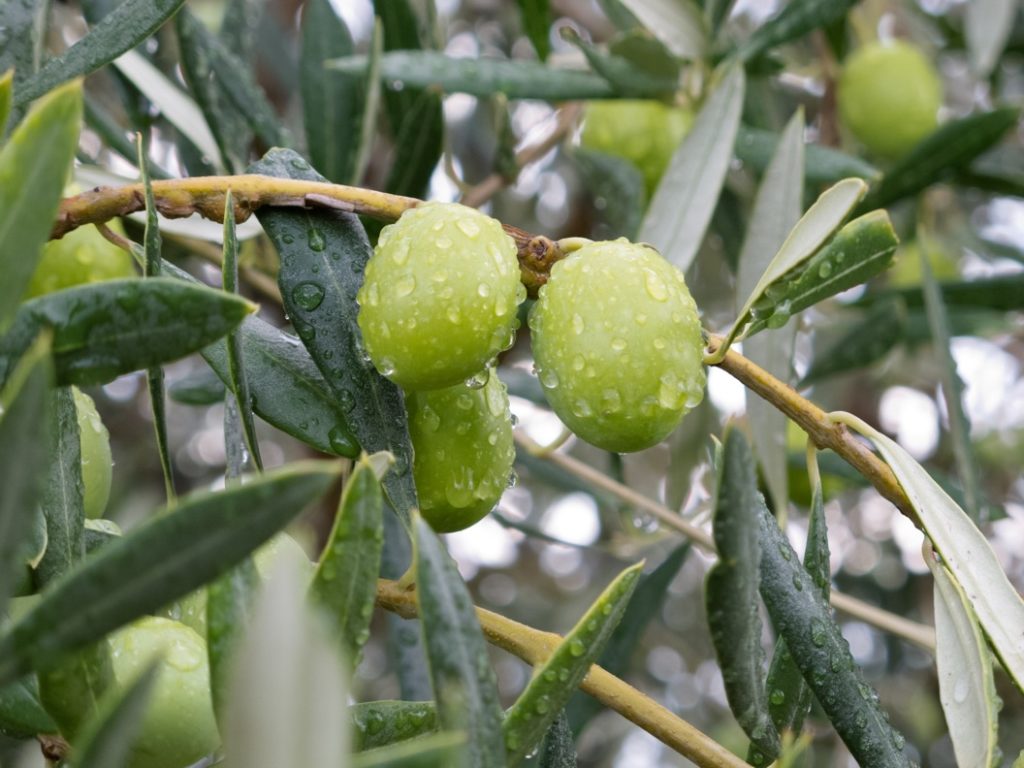
Olive trees are famously drought resistant – but that doesn’t mean they will thrive without regular watering and feeding.
Here’s a rundown of their main demands:
Preferred Sunlight & Temperature
Ideally, olive trees prefer the warm climes of their native Mediterranean.
However, several cultivars are more tolerant of cold than others.
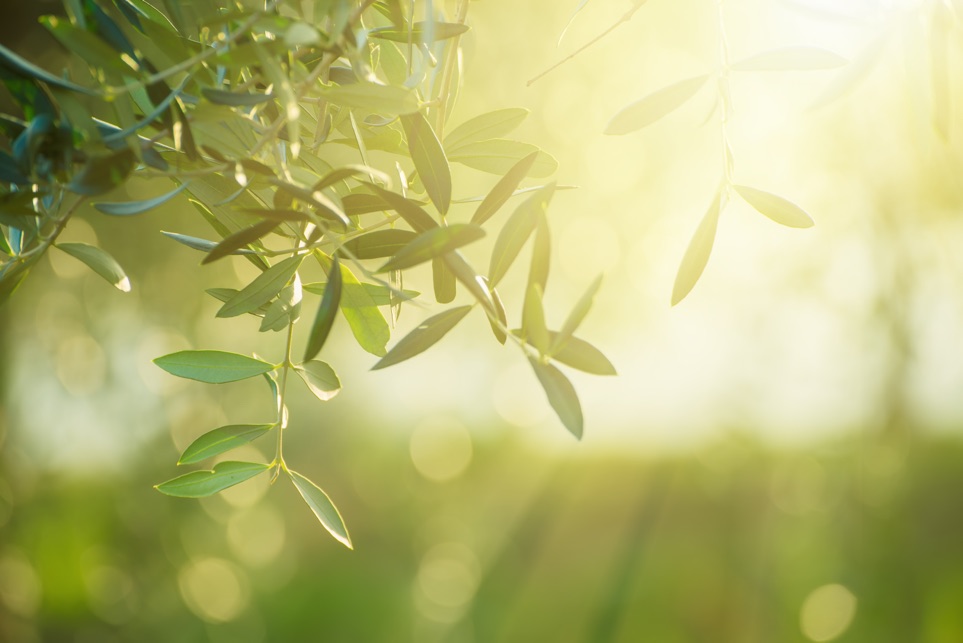
Generally speaking, they’ll do best when summer temperatures reach 20°C or more, while in winter, they can survive anything as low as -10°C for a short period of time.
In terms of sunlight, more is invariably better.
That’s why it’s important to position your olive tree in a position where it is likely to receive as much exposure to the sun’s rays as possible.
Watering
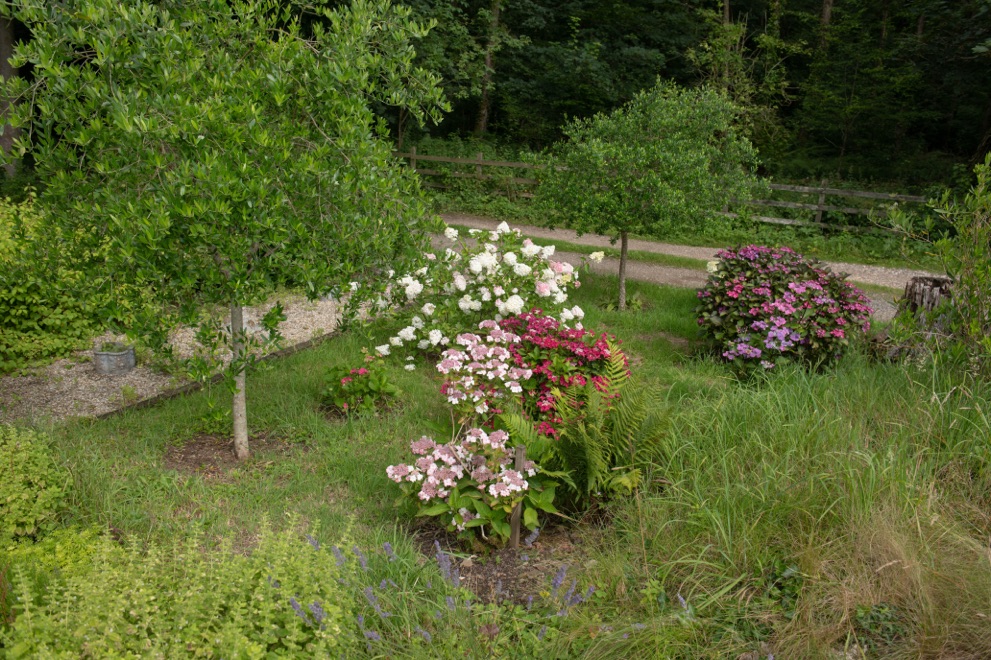
Though olive trees will survive periods of drought, their flowering and fruiting habits will definitely be negatively impacted without water.
For that reason, it’s advisable to keep them well irrigated.
Younger trees are more susceptible to becoming parched, but even mature varieties will feel the impacts in excessively long dry periods.
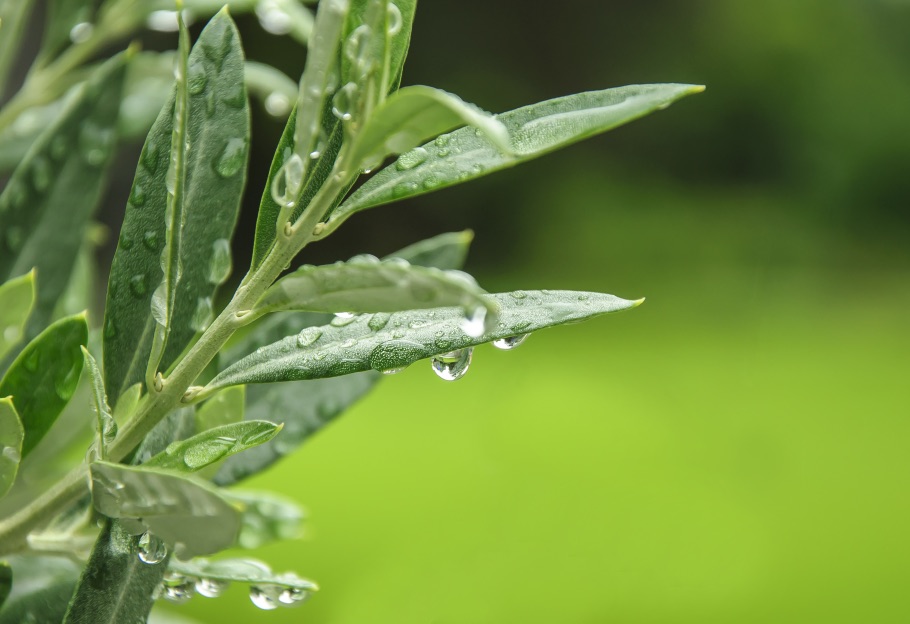
The former will require occasional watering in winter, while the latter does not demand any during the colder months.
Having said that, no olive tree withstands waterlogged roots for any stretch of time.
That’s why it’s imperative that the soil the tree is planted in enjoys good drainage, regardless of whether it’s a pot or the ground.
Feeding
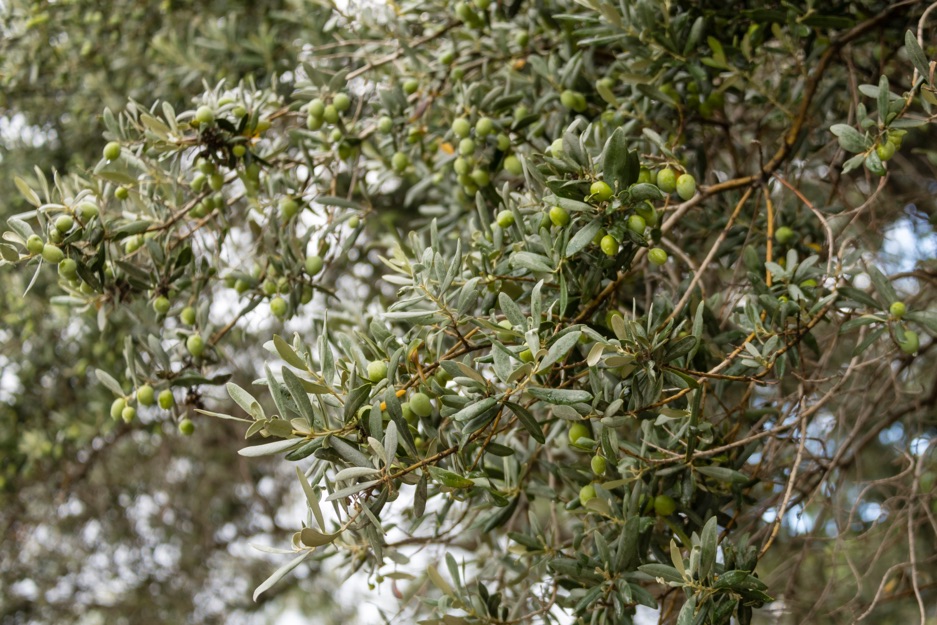
Use liquid fertiliser once a month from mid-spring until late summer to encourage maximum growth and an optimal yield of olives.
During this time period, the best results will be witnessed when feeding lightly but regularly.
In early spring, you can set it up for the growing season ahead with bonemeal, blood and fish feed, while mulching it with plenty of organic matter once every two years is advisable for a healthy, happy tree.
For potted specimens, Paul Smith recommends a regular feed from March to October and notes that any feed that is seaweed based, such as tomato fertilisers, are the best choice.
Common Problems & Pests
Generally speaking, olive trees don’t suffer too badly from diseases or blights.
However, if your tree is allowed to become excessively wet, it may be susceptible to phytophthora root and verticillium wilt.5Verticillium wilt. (n.d.). Royal Horticultural Society. Retrieved March 21, 2023, from https://www.rhs.org.uk/disease/verticillium-wilt
Honey fungus and olive scab are other occasional problems to watch out for.
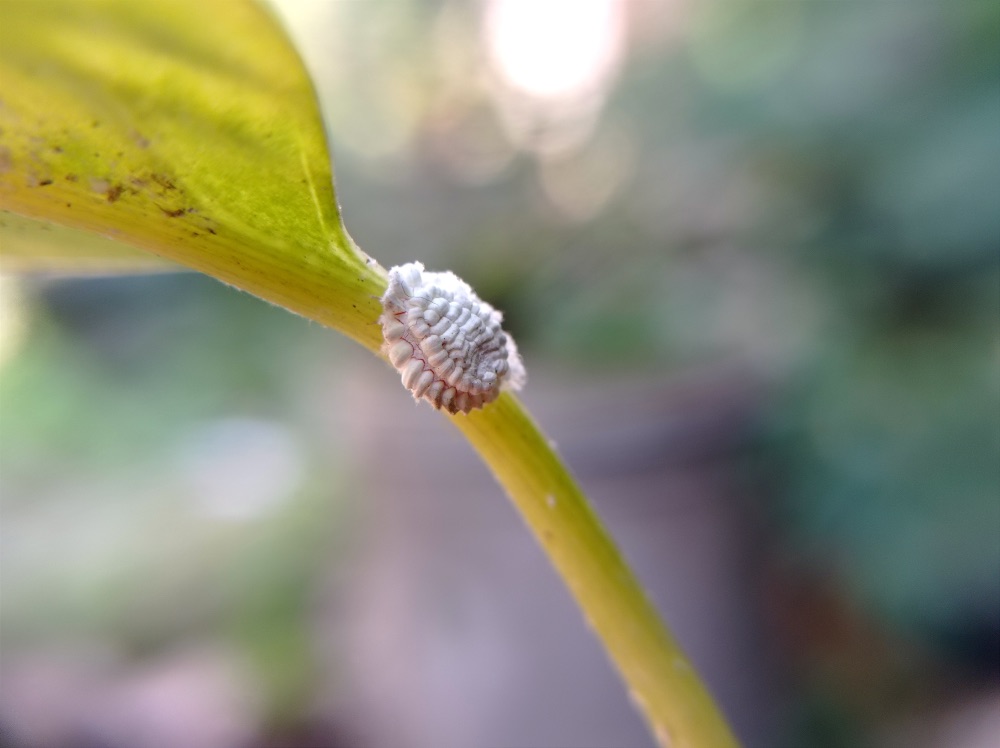
In terms of pests, the humble mealybug is chief among your worries.
They can suck the sap out of the branches and secrete honeydew onto leaves, causing them to turn black with mould.
Deal with them using an organic pesticide where applicable.
Winter Protection
Trees grown in the ground should be protected with horticultural fleece or hessian in parts of the country susceptible to extreme cold during winter.
Spreading a layer of mulch over the root systems is a good way to insulate them from the cold as well.
For potted varieties, moving them to an unheated conservatory or greenhouse will suffice to keep them safe during winter.
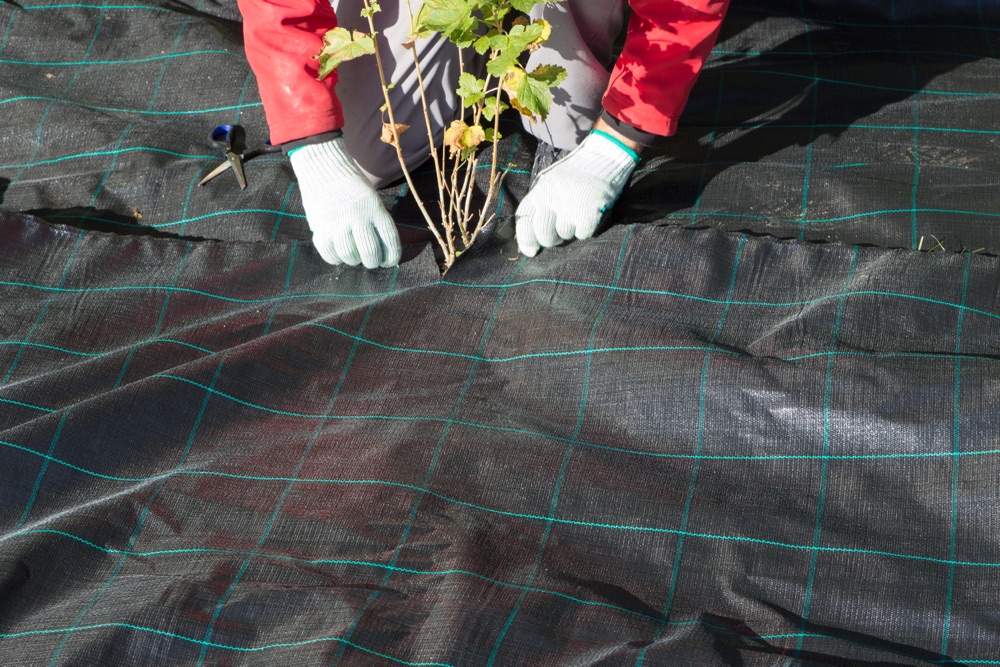
If that’s not an option, use fleece or bubble wrap to insulate the container and protect the roots.
“Olives will easily tolerate our UK winter temperatures and they will fruit better if exposed to a few cold months,” says Dan.
“What they don’t like is cold and wet or exposed sites, so if you have soil that becomes waterlogged in the winter I recommend growing in a pot.
“Wrapping your olive in horticultural fleece can be beneficial during the first and late frosts. If you are concerned about it surviving the winter where you are you can move it into an unheated conservatory or greenhouse.”
Propagation
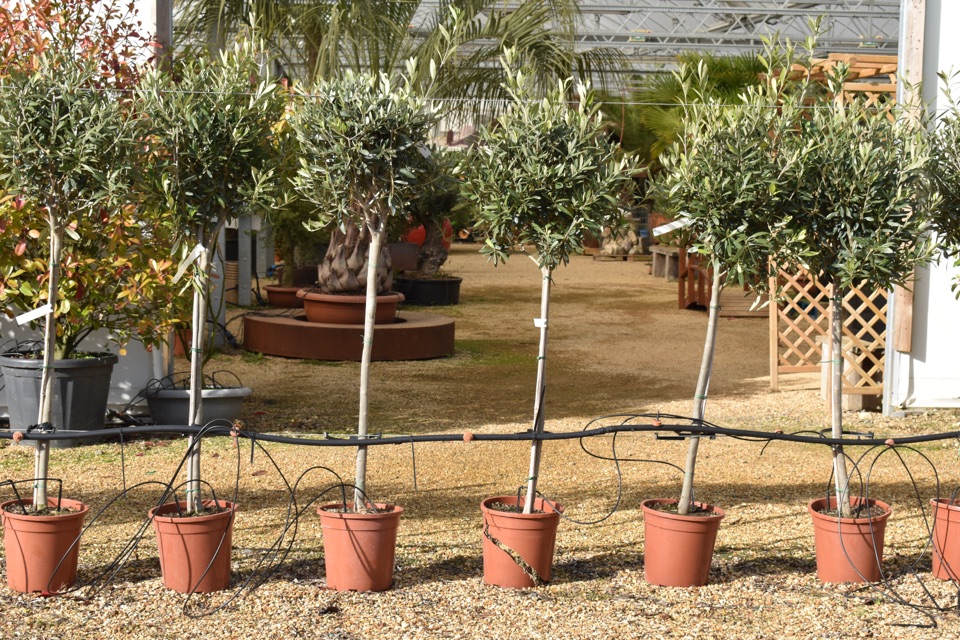
It’s possible to propagate olive trees and achieve a relative degree of accuracy between the parent tree and the offshoot.
Do so by taking semi-ripe cuttings (young branches less than one-year-old) in summer or hardwood cuttings in winter.
Take the cutting just below a leaf node and strip all leaves from near the base, leaving at least four near its tip to retain moisture.
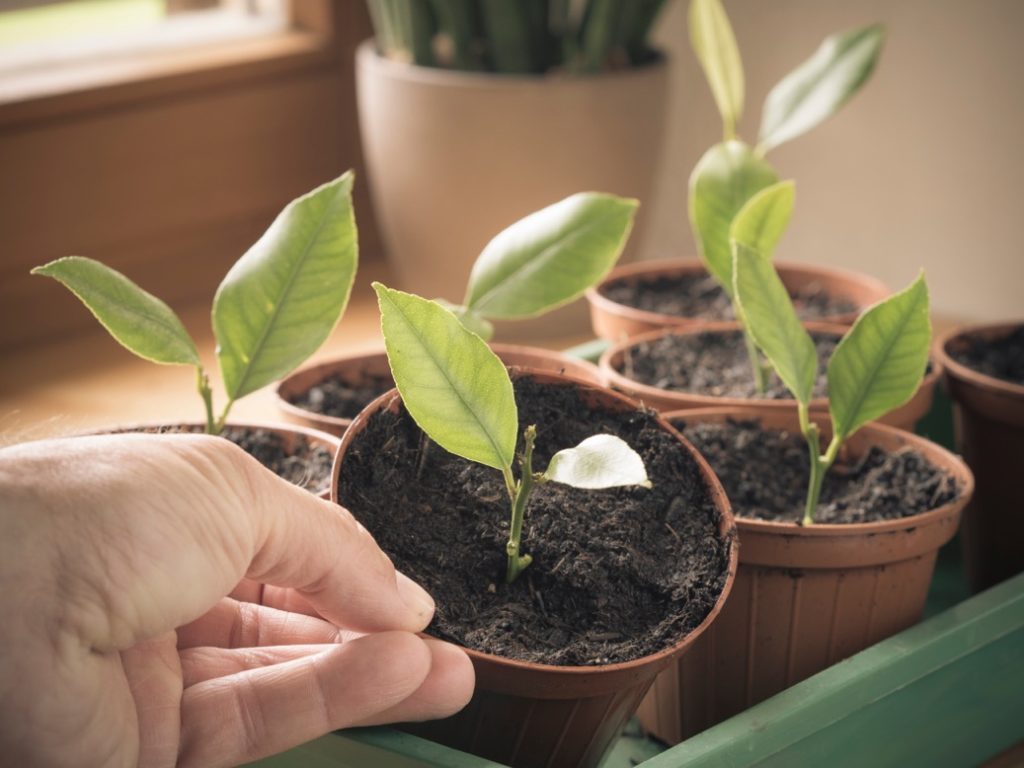
Dip the base in rooting hormone, then plant it firmly in the rooting mixture and tamp down the compost around it.
Both the soil and the cutting will need to be kept warm (around 20°C) and moist for the first few months after planting.
After the roots have established, it can be transplanted outside or into a pot.
Harvesting & Storage
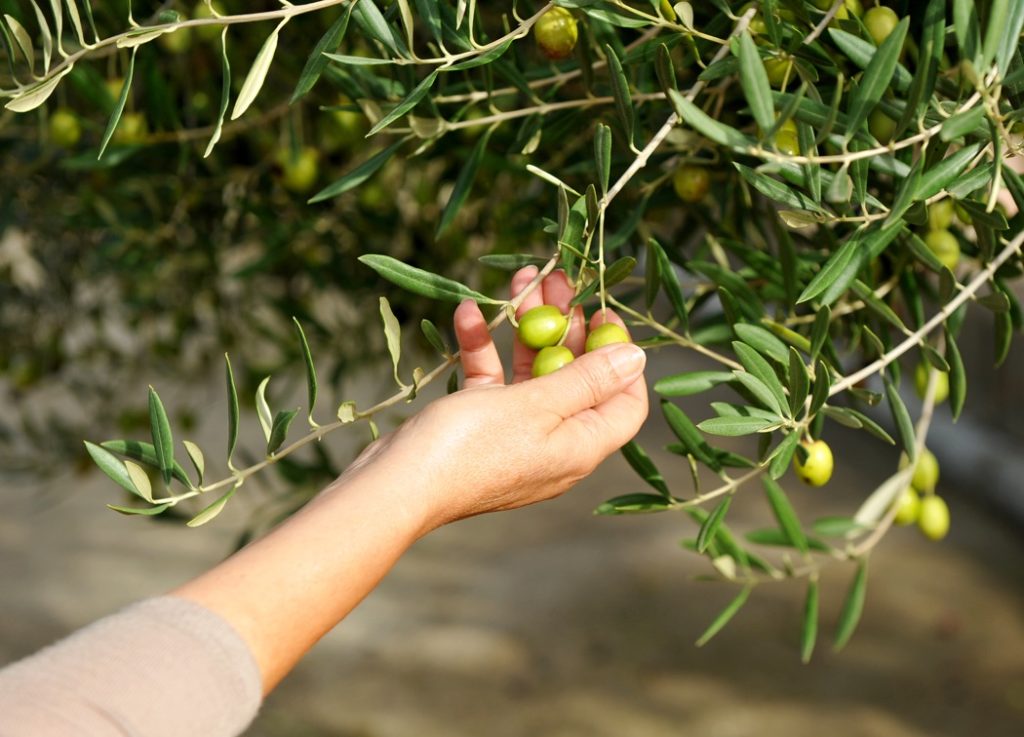
Olive trees begin producing fruit when three to five years old and should be harvested in autumn.
Those favouring green olives should strip them from the tree when they reach full ripeness, though they must be soaked in salt water for a few days to make them tasty.
On the other hand, if you prefer black olives, allow them to remain on the plant until they firm up and darken in colour.
Once black, remove them from the tree and dry-cure them in salt for a few weeks to dehydrate them.
Regardless of which type of olive you harvest, they should be stored in either brine or olive oil to retain their freshness for as long as possible.6Demaio, P. (2021, February 26). It’s a keeper: how to preserve your own olives at home. The Guardian. Retrieved March 21, 2023, from https://www.theguardian.com/food/2021/feb/27/its-a-keeper-how-to-preserve-your-own-olives-at-home
References
- 1Raezer, D. (2022, October 11). World’s Oldest Olive Tree. Approach Guides. Retrieved March 21, 2023, from https://approachguides.com/blog/oldest-monumental-olive-tree-vouves-crete/
- 2Cartwright, M. (2016, September 9). The Olive in the Ancient Mediterranean. World History Encyclopedia. Retrieved March 21, 2023, from https://www.worldhistory.org/article/947/the-olive-in-the-ancient-mediterranean/
- 3Olea europaea (F) | common olive. (n.d.). Royal Horticultural Society. Retrieved March 21, 2023, from https://www.rhs.org.uk/plants/11735/olea-europaea-(f)/details
- 4Koubouris, G., Kavroulakis, N., Metzidakis, I., & Sofo, A. (2015, March). Ultraviolet-B radiation or heat cause changes in photosynthesis, antioxidant enzyme activities and pollen. . . ResearchGate. Retrieved March 21, 2023, from https://www.researchgate.net/publication/273696243_Ultraviolet-B_radiation_or_heat_cause_changes_in_photosynthesis_antioxidant_enzyme_activities_and_pollen_performance_in_olive_tree
- 5Verticillium wilt. (n.d.). Royal Horticultural Society. Retrieved March 21, 2023, from https://www.rhs.org.uk/disease/verticillium-wilt
- 6Demaio, P. (2021, February 26). It’s a keeper: how to preserve your own olives at home. The Guardian. Retrieved March 21, 2023, from https://www.theguardian.com/food/2021/feb/27/its-a-keeper-how-to-preserve-your-own-olives-at-home

